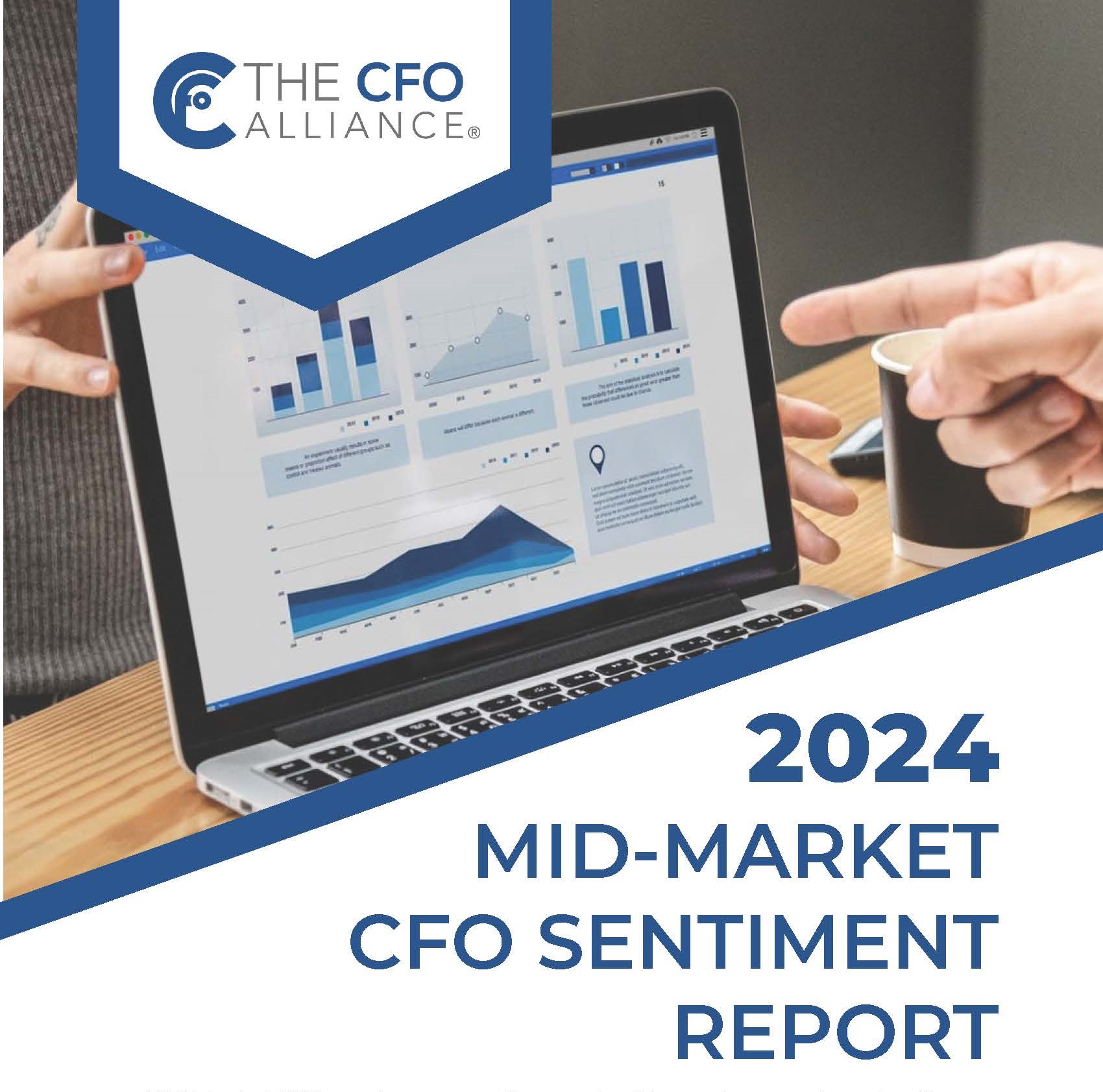In the News! - Recent news article from CFO.com
Mid-market chief financial officers have set aggressive performance goals for their organizations in 2024, despite team skill gaps, a lack of resources, and a need for significant upgrades to their tech stacks.
More than one-third of middle market finance leaders surveyed by The CFO Alliance foresees double-digit revenue growth in 2024, and 40% anticipates double-digit EBITDA (earnings before interest, taxes, depreciation, and amortization) growth.
The finance leaders, about 450 members of The CFO Alliance (80% were CFOs), also have large-scale initiatives planned: about 39% plan a major system implementation, 35% a cost rationalization initiative, and 23% a merger or acquisition. About 18% plan incremental debt financing and 14% an equity capital raise.
“I’m not surprised by their confidence in the economy, their industries and companies, or the market,” said Nick Araco Jr., founder and CEO of The CFO Alliance. However, after a period of “paralysis” in the second half of 2023, “I was surprised by how many intend to look at their capitalization in 2024 and do something that’s going to change their cap table or investor model potentially,” he said.
With most mid-market CFOs operating one or two people down and 42% expecting the workload to increase this year, it will be a year of dealing with skills gaps and resource restrictions — not unusual for companies with a couple of hundred million dollars in revenue or less.
Mid-market finance teams typically have to run “leaner and meaner,” both in headcount and skills, Araco Jr. said. “They don’t have the ability simply to address issues by adding another body to the mix. And their tech stacks are not optimal.”
Particularly in the lower-middle market, companies have legacy or industry-driven systems. And those companies paused any tech fixes in 2020, said Araco Jr., “because the focus was on solidifying the base from a customer and employee experience standpoint.” Then in 2021 and 2022, “it was all about what the employees needed.” In 2024, CFOs are learning to live with their human capital constraints, so the focus is on automation and technology.
Tech Investment Plans
Of the tech advancements planned this year, 44% of the respondents (the largest number) chose data visualization and business intelligence, nearly 37% workflow automation and AI, and 36% enterprise resource planning system implementations.
Why is data visualization at the top? The expanding tech stack within mid-market enterprises means “functional leaders in sales, marketing, supply chain, operations, risk management all have plugged technology in that can capture data and make what was once not measurable, measurable,” said Araco Jr.
As a hub for the capture and consistency of that data, finance teams realize they need to get the data into the hands of decision-makers in a “substance, form, and routine so that they are actually going to use it,” Araco Jr. said.
The necessity for workflow initiatives arises because 83% of CFOs said they’re too busy to deal with anything other than their day-to-day responsibilities. They want to redesign workflows to be more efficient so that there are fewer steps to processes and less human involvement.
“People are still trying to figure out how they work efficiently and effectively with each other in this world of work-from-anywhere work.” - Nick Araco Jr., CEO, The CFO Alliance
The other obstacle in workflows is a communications gap, Araco Jr. said. “People are still trying to figure out how they work efficiently and effectively with each other in this world of work-from-anywhere work.”
Unfortunately, workflow improvements may be difficult: 44% identified a workflow automation skills gap in their teams.
As a group, mid-market companies are not collectively taking a hard look at AI yet, said Araco Jr. “They have to get ready for it, and they’re sticking their toes in the water, but they’re not there yet,” he said. At a recent meeting of about 300 CFO Alliance members, 94% had not brought AI into finance and accounting operations despite initiatives in other parts of the company, Araco Jr. said.
If CFOs don’t manage to increase efficiencies at their current company, they could be headed out the door: more than one-third of the CFOs expressed that they would likely seek new career opportunities within the next 12 months.
The respondents were polled from mid-December 2023 to mid-January 2024. About one-fifth (21%) had revenue of less than $10 million, one-third (32%) had revenue of $10 million to $50 million, and 31% had revenue of over $50 million to $250 million.



